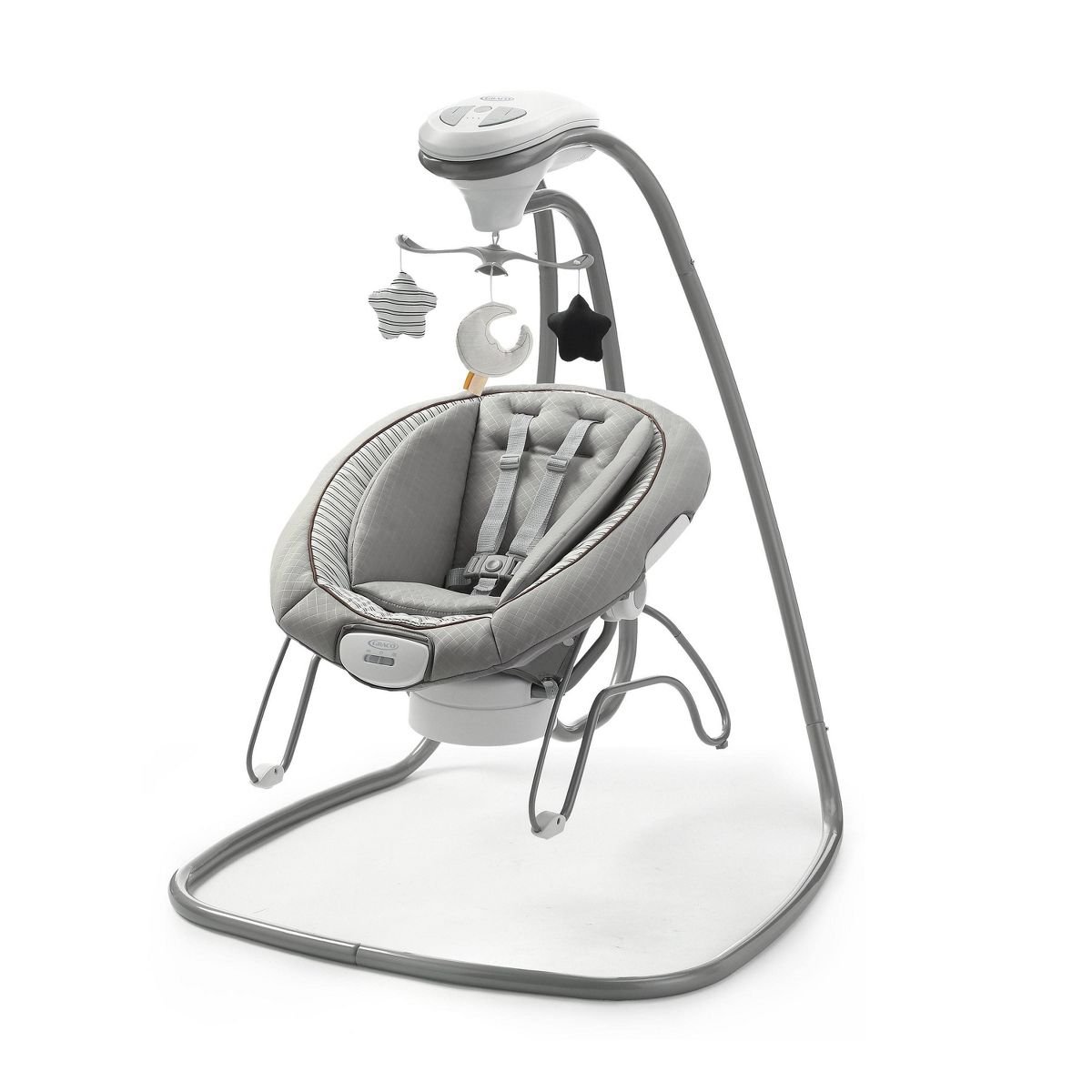Is my baby gear stunting their development? (Positioning Devices edition)
I was happily surprised to see that the first page of “baby registry items” on Amazon contained only ONE positioning device—and it wasn’t even one of the worst ones! Perhaps the industry is getting away from pushing detrimental products on unsuspecting parents. After all, many parents (like you, since you are reading this) are becoming aware that less is more when it comes to healthy and natural baby development.
The Fisher-Price Sit-Me-Up Floor Seat can be found on the first page of the “baby registry items” search on Amazon. This scores “Moderately Detrimental” on my scale of baby equipment and their impact on gross motor development. (See all of my ratings at the end of this article.)
(source: Amazon.com)
“GROSS MOTOR DEVELOPMENT: Gross motor (physical) skills are those which require whole body movement and which involve the large (core stabilising) muscles of the body to perform everyday functions, such as standing and walking, running and jumping, and sitting upright at the table. They also includes eye-hand coordination skills such as ball skills (throwing, catching, kicking) as well as riding a bike or a scooter and swimming.”
However, starting at “one month old baby gear,” you begin to see the baby bouncers on the first row of the search page. Swings get their own page on Target’s recommended registry items page. Activity/exercise saucers and baby walkers are hot finds on all the mom pages and threads I come across. It seems like baby positioning equipment is as necessary as… well, maybe not diapers, but at least cribs. But are they really necessary? As a pediatric physical therapist I would like to make the case that baby positioning equipment (aka: Positioners) is not only unnecessary, but detrimental.
Examples of baby positioning equipment, or Positioners. (source: Amazon.com)
“Positioners: any piece of equipment that places a baby in a position that requires minimal active effort on their part, especially in a position that the baby cannot maintain on their own.”
Typical babies naturally work their way through the Developmental Sequence. Here is the Sequence simplified:
Back—>Tummy—>Sitting—>Crawling—>Standing—>Cruising—>Walking—>Higher level skills
Baby needs ample time against gravity and with freedom of movement to integrate their primitive reflexes, build muscle strength, and improve motor planning in order to move on to the next step in the Sequence. If they do not get the time and opportunities necessary, they will either skip the next skill, perform it poorly, or compensate. That may not seem like a big deal until the delay bottlenecks. For example:
Because Baby is placed in a baby swing when they aren’t being held, their low tolerance of Tummy Time leads to poor sitting posture, which leads to awkward crawling patterns, which leads to late standing, which leads to no cruising, which leads to toe walking and the inability to run with flight phase when they want to play T-ball. This is a common example of what happens when something impedes a baby’s ability to move smoothly through the Developmental Sequence. So, how can we make sure this doesn’t happen?
First we will look at what NOT to do. Then we will look at what we SHOULD do. I’ll even rate Positioners for you and give you my alternatives that have worked for all of my very different babies.
What NOT to do.
The easiest way to promote typical gross motor development is to limit or avoid—depending on the equipment— artificial weightbearing Positioners. This refers to any piece of equipment that places Baby in a position that they couldn’t naturally get into or maintain. Babies start out with very limited outward expression, but their brains are constantly processing their experiences against gravity, and engraining the meaning.
Example of baby swings causing developmental delay.
For example, a baby that is often placed in a swing and is rarely placed flat on their backs also has less opportunities for their inner ear (vestibular) mechanism to learn that laying down is a safe place to be. This child will have difficulty being assessed at the doctor, diaper changes will be very messy, and they will have extreme separation anxiety when dropped off at daycare because the caretakers don’t know how to manage their vestibular sensitivity, so it’s become a scary place. Not to mention the reflexes that don’t get integrated and the abdominal muscles that become so weak and tight that baby can’t sit up straight when it’s time to do so.
My suggestion: Give Baby time flat on their back and tummy whenever possible.
(examples based on real cases.)
“Each minute in a Positioner is a minute that your baby is not developing their core strength and gross motor skills. As parents we must keep this trade-off in mind.”
Example of Bumbo chairs causing developmental delay.
Bumbo chairs are popular among parents for the safety aspect of the design. Babies are held very securely in this seat, which makes containing a wiggly baby and feeding them much easier. Bumbo seats do hold Baby in a secure position, but this position is not normal and is not advantageous to spinal development. Babies are born with a C shaped spine from neck to tailbone. As they play on their tummies they develop the muscles necessary to extend their spine. The C curve begins to straighten out. Then the act of sitting causes the natural reverse curves in their neck and lower back to begin developing. (We refer to these curves as kyphotic and lordotic curves.)
Bumbo chairs don’t allow Baby to sit upright and develop those good, lordotic curves. Instead, they cause them to sit with that newborn C curve, which is unnatural. This weakens the spinal muscles and tightens the abdominal muscles. It also teaches the brain that this is the way to sit. Notice the sitting posture of babies who sit in Bumbo chairs daily: they sit with rounded posture and a forward head, if they can sit on their own at all. It’s very hard to interact with your siblings if you can’t sit up straight and look around. It’s difficult to play when you have to use your hands to sit because your core muscles are weak.
My suggestion: Don’t help Baby sit with Positioners. If they are getting enough floor time and opportunities to explore their movement, they will sit on their own and their quality will be better. Rushing their sitting skills by putting them in artificial weightbearing Positioners can actually delay their upcoming skills.
“Gross motor delay is often seen alongside communication and cognitive delays.”
Example of activity/exercise saucers, baby walkers and jumpers causing developmental delay.
This tends to be a controversial topic because many parents rely on these Positioners to not only entertain their babies, but to keep them safe while they go to the bathroom, cook dinner, or take care of other children. Some parents even believe placing Baby in a walker will help them walk earlier. To condemn Positioners often feels like a personal attack. But as a pediatric PT and mother of three, I’m here to tell you that it is not personal. I’m on the side of the mothers who have been heavily marketed to and who have made decisions with their child’s best interests in mind. It’s not the mamas’ faults, it’s the industry’s and the false advertising.
Activity/exercise saucers, baby walkers, and jumpers are not developmentally helpful like the packaging states. Just as babies learn to sit the wrong way in a Bumbo, they learn to stand the wrong way in an activity/exercise saucer.
Let’s start by busting a myth with science: babies will not stand or walk sooner because you place them in standing sooner.
Science: Babies will stand (correctly) when their brains are ready. That will happen at slightly different ages, and depends on their reflex integration, previous skill acquisition and opportunities given.
Anectodal evidence: Babies who spend more time in the Positioners stand later and/or walk abnormally.
Babies are extremely good at creating neural pathways in their brains. These pathways are similar to driving down the same rut in the dirt road every day, causing it to deepen and making it difficult to drive in any way other than the path that they create.
When babies stand in Positioners that have slings beneath their pelvis, their brain learns that they can stand without using their core, hip, or postural muscles. Later, when they are developmentally ready to stand (around 10 months old usually) their very smart brains are confused about why their Standing Neural Pathway is no longer leading to standing up. They have to unlearn that pattern, hopefully on their own but often with the help of PTs, and relearn to stand using the right muscles, and this takes time.
Also, standing in these Positioners before the brain is ready to stand independently causes them to activate the wrong leg and ankle muscles. No matter how well you follow the manufacturer’s instructions to correctly adjust the Positioner, they will push through their toes when actively standing, walking or jumping. It is a reflex that no adjustment will correct. This is because their brains have not yet formed the heel contact/glute muscle and lateral foot contact/ abdominal muscle connections. This is why these babies often end up toe walking. They practiced that pattern every time they were placed in the Positioner.
My suggestion: Give baby ample opportunity to crawl, explore pulling to stand, and cruise without rushing them into a standing position. Utilize a play yard or gated area to keep them safe if you have to put them down.
What to do instead.
Determine Baby’s most content windows of time throughout the day. Plan to alternate back and tummy time fully against gravity in these windows. Gold standard for Tummy Time is 88 minutes a day. Spend time on the floor with them, use a portable play yard or basket to keep them near you, or alternate toys around them to make floor time more enjoyable for them.
Make the choice to remove all Positioners from your home, reasonably. Then you won’t be tempted to use them. Necessity is the mother of invention. You will be surprised how easy it actually is to keep Baby safe and content with less equipment.
Practice baby-wearing so you and Baby can both comfortably co-regulate throughout the day without Baby being distracted into contentment by swings or other Positioners.
Limit the baby carrier for use as a car seat only. Try to get in the habit of holding baby, wearing baby, or using a stroller when you go out and about. Avoid the carriers that convert to strollers. Before you know it, Baby has been reclined for hours, which not only causes development issues, but can cause head flattening.
Consider a pram-style stroller for newborns instead of a stroller that a carrier clips into. This limits their time in a reclined position and gives them “floor time” when you’re out.
Here’s what I did…
Baby no. 1
When it was just my son and me, he spent most of his time on a thick, crocheted blanket on the floor. He could see and sense me wherever I was in our living room or kitchen. He was on his back and tummy for extended periods of time from Day One. I wore him with a Moby wrap or Moby ring sling if he was fussy or I needed to be more mobile and hands off. Since I worked two days a week, he stayed with a family member and often napped in a swing. He quickly got into the habit of sleeping in a reclined position. Though he played on his back, he would not sleep on his back! I perpetuated this by allowing him to nap in a static bouncer seat at home. Naptime and bedtime were an absolute nightmare. I donated the Rock n Play before my daughter was born…
We trained him at a young age to stay away from No Touch things and allowed him to crawl freely around most of our home. Of course, it took more time and supervision than if I had placed him in a Positioner, but the inconvenience was worth it. Besides the sleep issues, he gained his skills at the early end of “normal” and with no compensations. I’ll tell you more about his retained primitive reflexes later…
Baby no. 2
Because I had a two year old boy afoot, my daughter did her “floor time” in a Pack n Play with an elevated mattress until she could sit. This way she was flat, above her brother’s head, and in sight even when I was across the room. I wore her more than I wore him out of convenience. Because she naturally had lower muscle tone, her skills developed at the late end of “normal,” but they were all of good quality. I assisted her sitting by placing a nursing pillow around her. I also placed her in a tall laundry basket so I could keep her near me as I moved through the house, and she could practice propping, sitting and playing without falling to the ground. Make sure your baby isn’t so tall that the laundry basket flips when they lean on the sides! I also utilized the high chair when she was learning to sit because it did not hold her in a “bad” position like the Bumbo chairs. Pro Tip: make sure your high chair has a foot rest. (My suggestions are linked below)
Baby no. 3
My baby is still a baby, so I don’t have as many suggestions. With two little ones running around, he doesn’t get a lot of dedicated time actually on the floor unless I’m sitting with him. He often lays flat in a Moses basket that I can take with me anywhere in the house. He can watch me while I wash dishes, do laundry, etc. I wear him often, using the same Moby wrap and ring sling that I used for the other two. His car seat carrier has not yet been taken out of the base; I wear him, carry him, or place him in his pram stroller where he can lay flat when we go in public.
As you can see, I’ve actually used less equipment as I’ve had more children. It can be done and I’m here to encourage you that you can do it, too! We don’t have to believe the marketing lies about what is good for our children’s development. The truth is, what was good for babies hundreds of years ago, even 50 years ago, is still good for our babies today: time on their back, time on their tummy, and time in your arms. Anything else is a trade-off.
Interested in a virtual consult with me? I would love to answer your baby development questions and help you troubleshoot your own experience! You can schedule here:
Dr. Caitlin’s Positioner Ratings
Highly Detrimental to Development
Exercise saucers, activity saucers, baby walkers, doorway jumpers, etc.
Marketers argue that it strengthens leg muscles. Child development experts, like myself, argue that it over-strengthens muscles that lead to toe walking, along with teaching an abnormal pattern of standing and walking that is difficult to unlearn, leading to developmental delay in many children. Some children are affected by small amounts of time in Positioners, while other children are not affected until exposure is high. Since we can’t know their tolerance, these should be avoided.
Moderately Detrimental to Development
Bumbo seats, baby swings, bouncer seats, Sit-Me-Up chairs, hip carry pillows, car seat carriers.
These Positioners can cause issues when used in excess. In my opinion, it’s worth simply not using non-essentials like Bumbo seats, baby swings, bouncers, and Sit-Me-Up chairs, especially because we can’t avoid using the car seat carrier. Before you know it, time in Positioners really adds up.
A note about the hot new pillow for hip carrying babies: while very convenient for parents, this allows Baby to hip carry without using their adductors (inner thigh muscles) or abdominals. We already see adductor weakness and its negative affects on babies quite often in our clinic. Overuse of this equipment robs Baby of a very natural way of developing these important muscle groups.
Dr. Caitlin’s Recommendations
birth to sitting
(Turn your phone sideways to view captions. Click photo for link.)
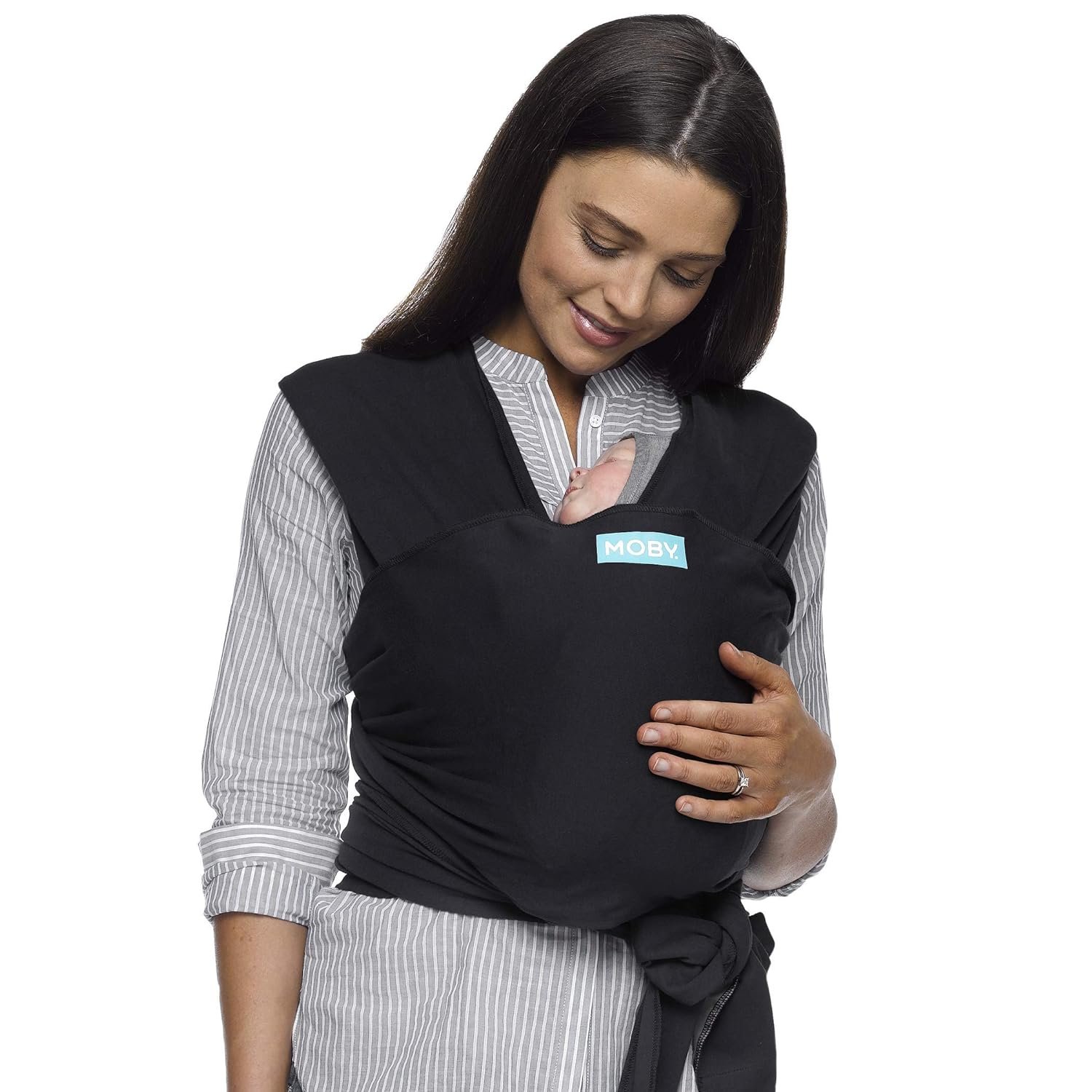
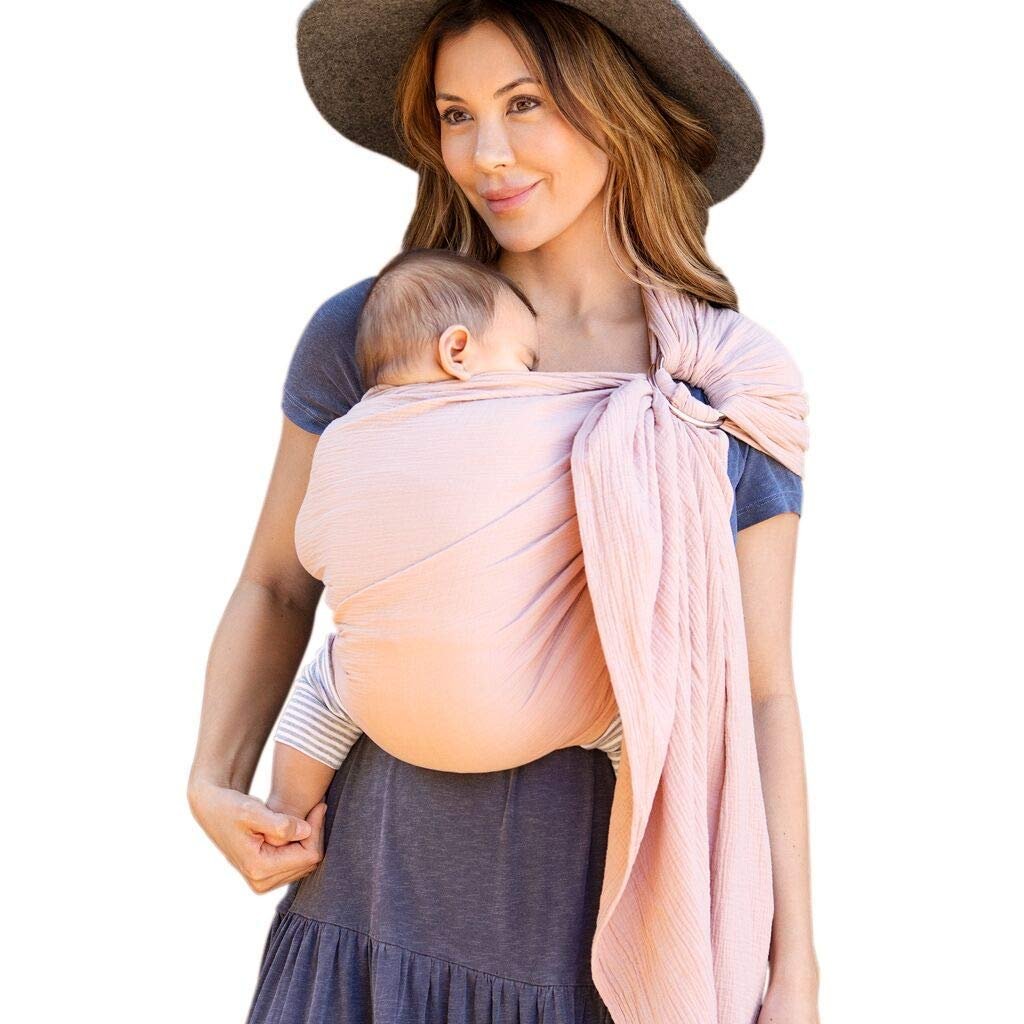
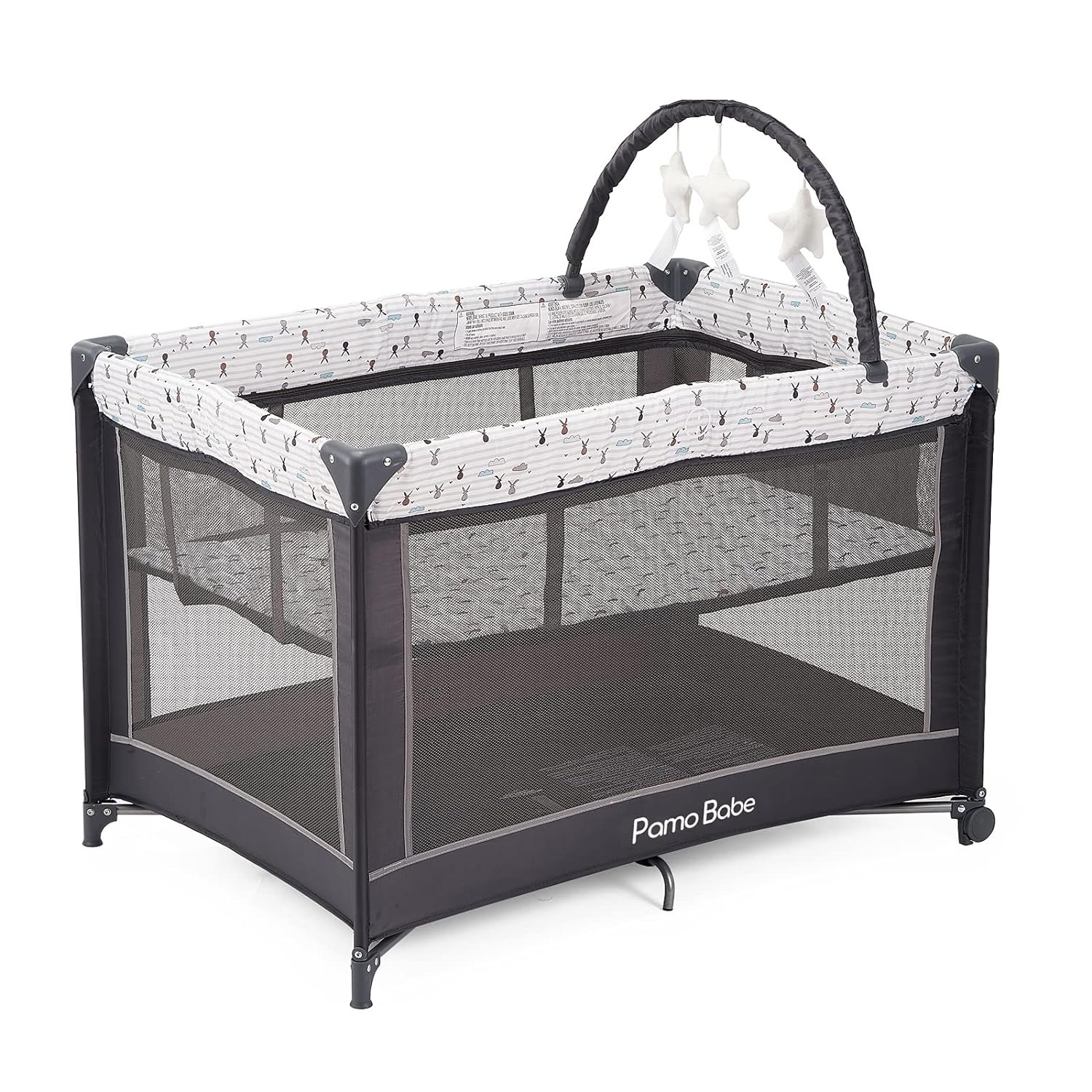
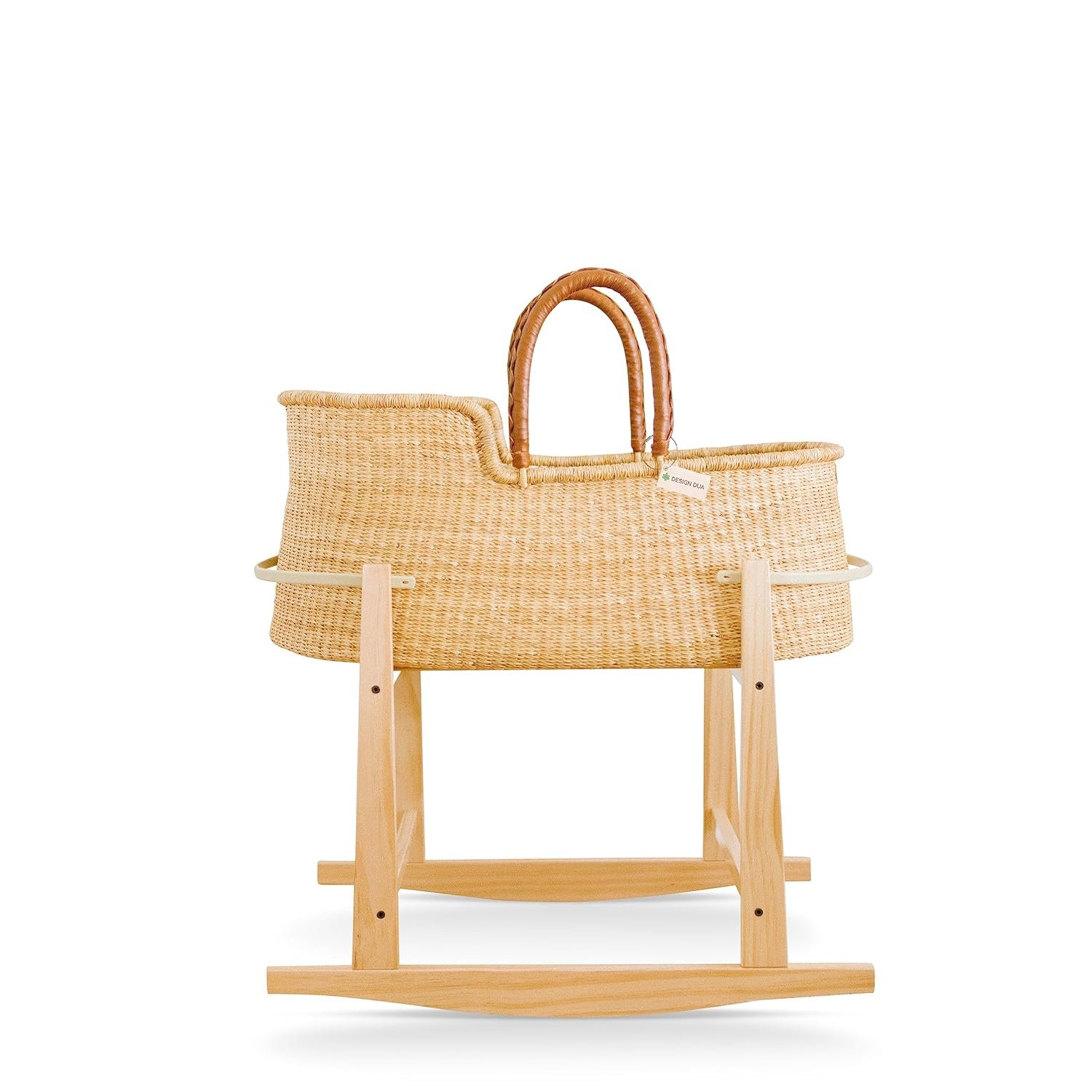
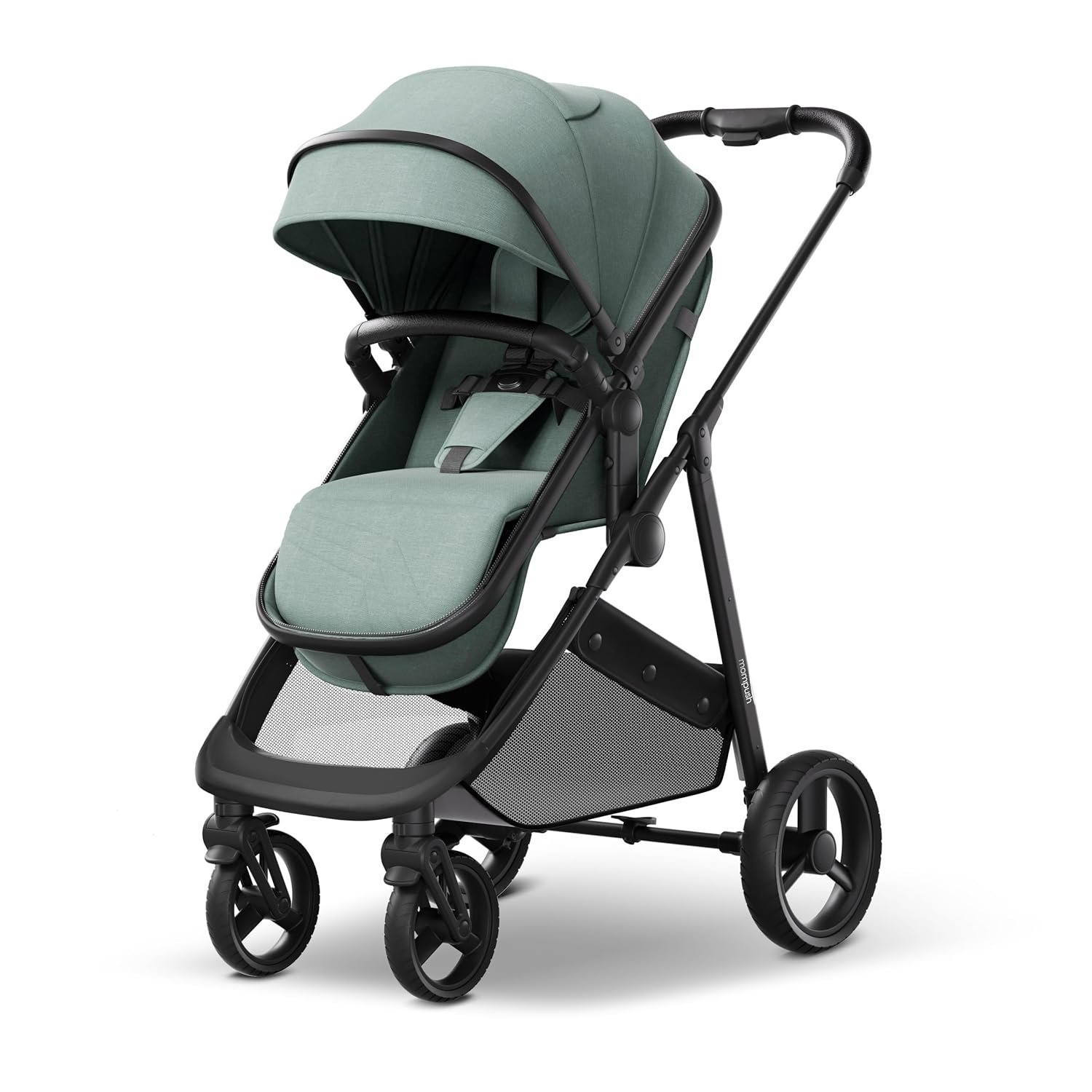
sitting to crawling
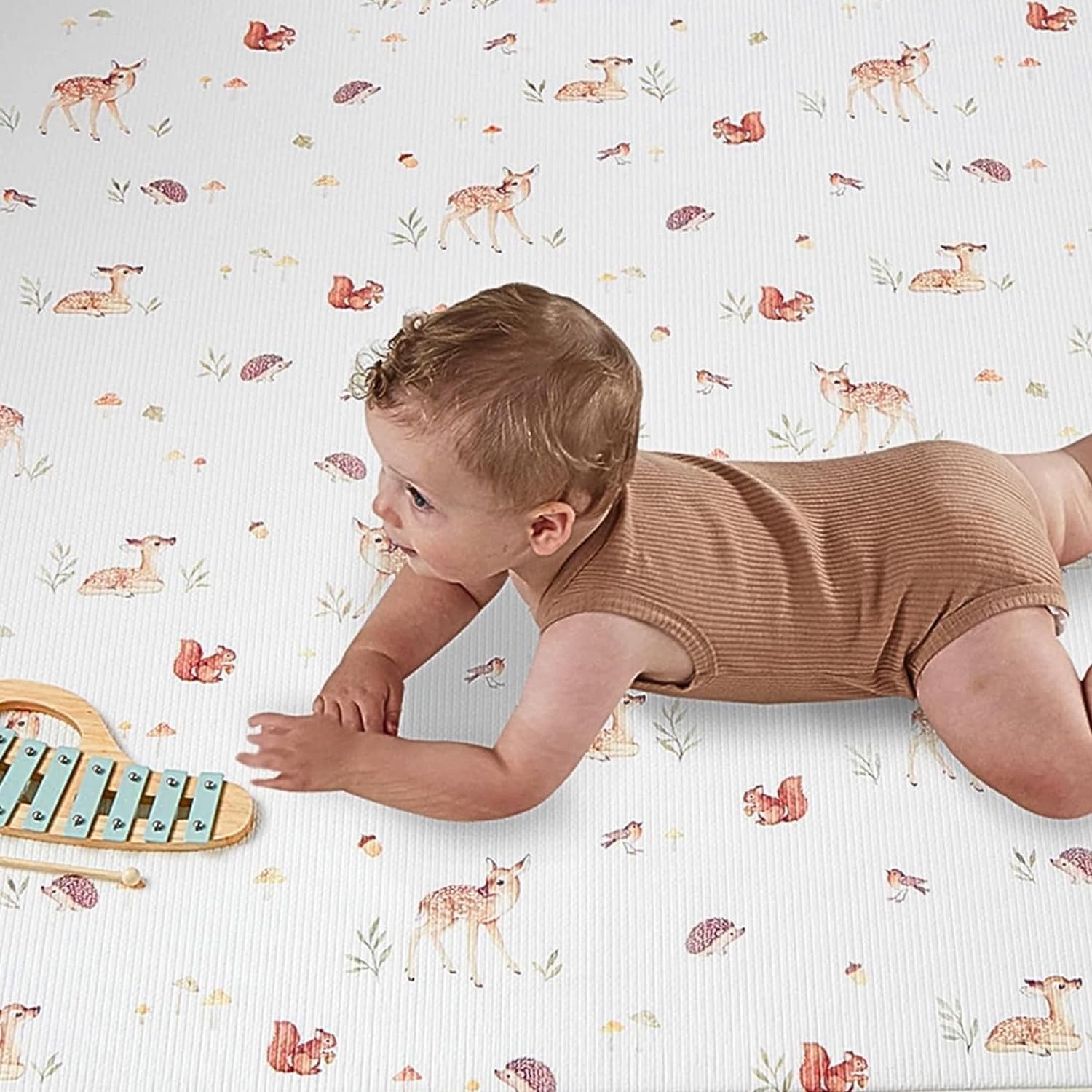
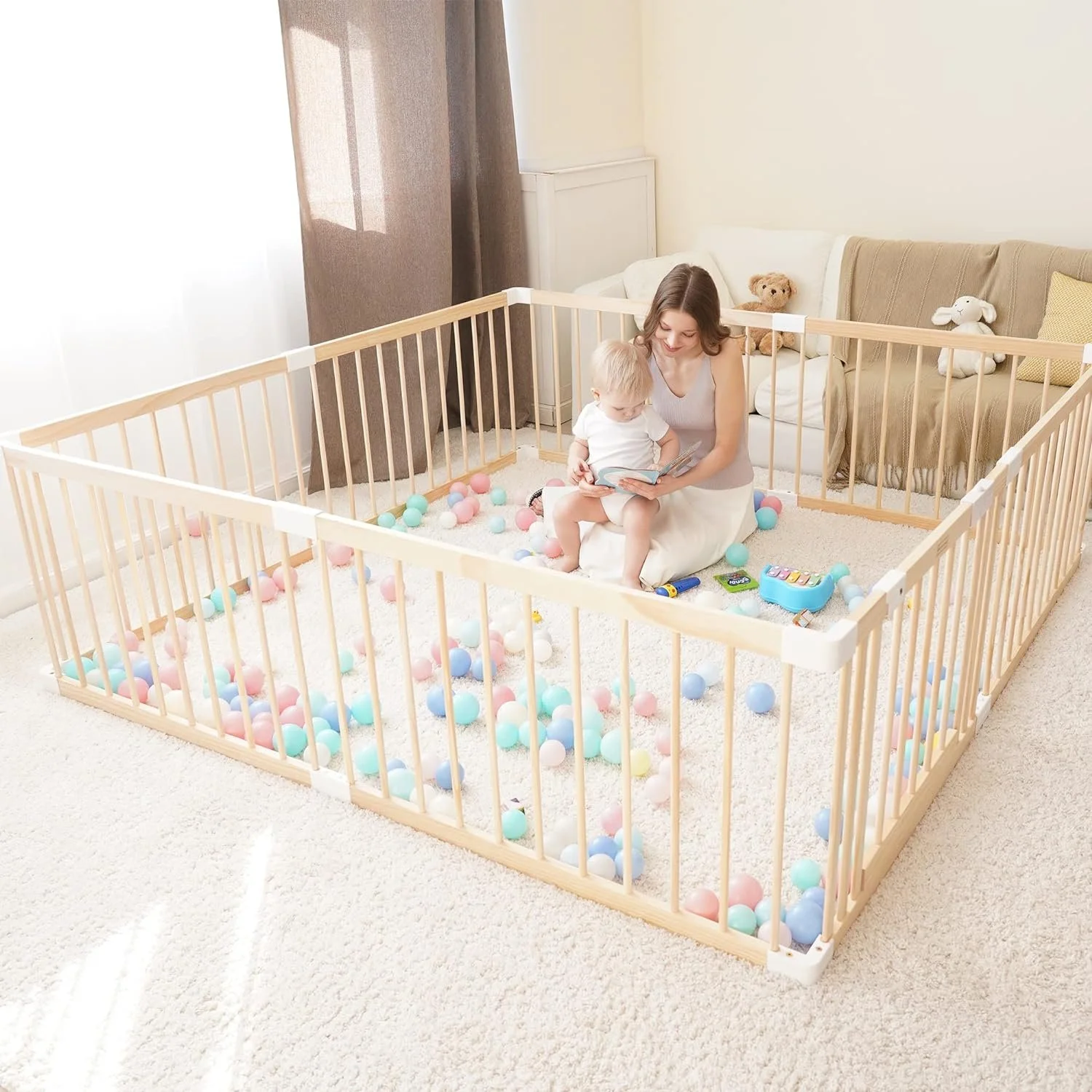
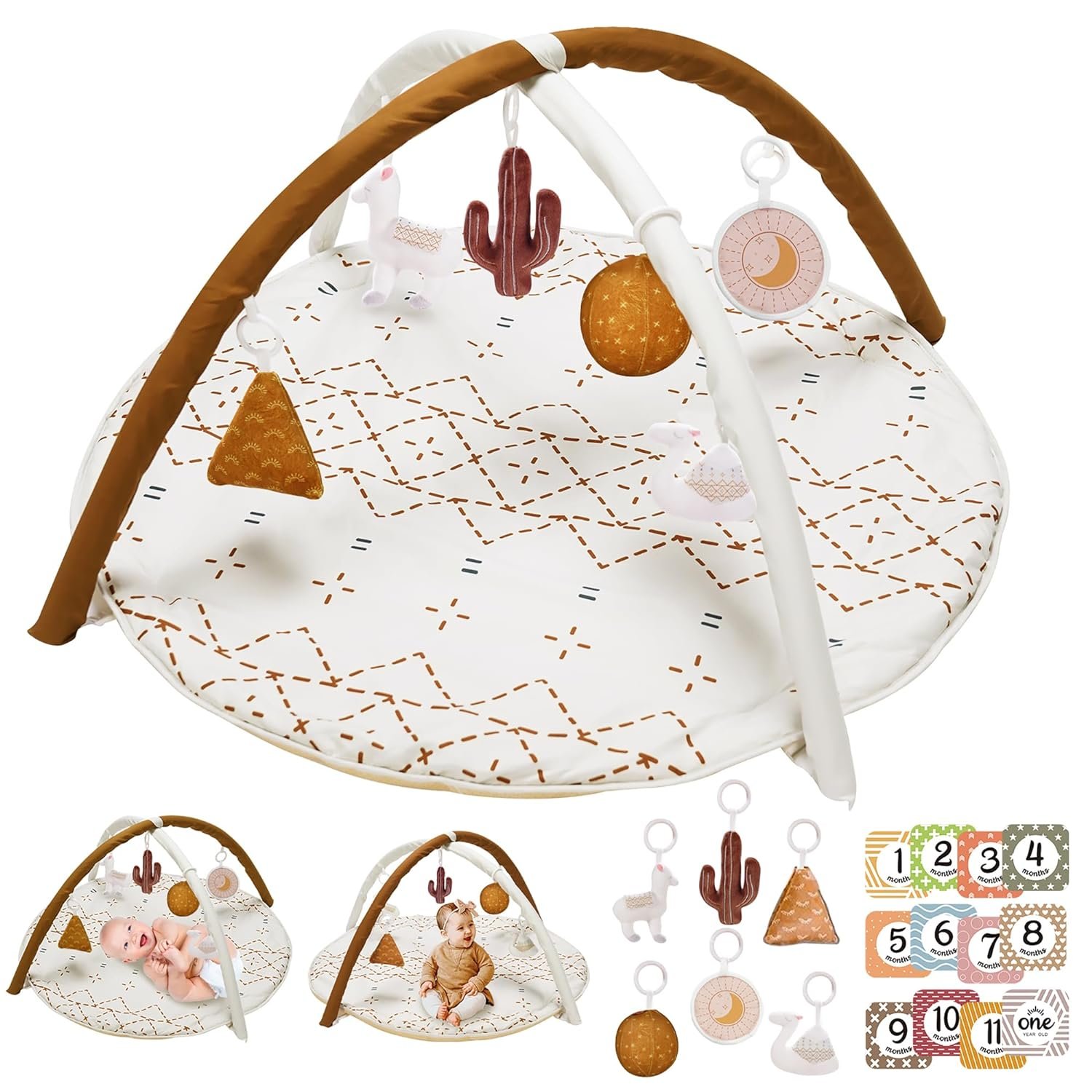

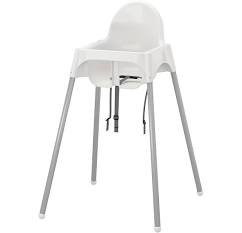
Curious about the new CDC developmental milestones for babies? Find out why many skills were pushed to a later age, and why crawling was removed from the list of normal developmental milestones. Every parent needs to hear this information.
This article contains affiliate links to products I personally use and/or endorse. This feature helps to fund my business at no extra charge to you.





